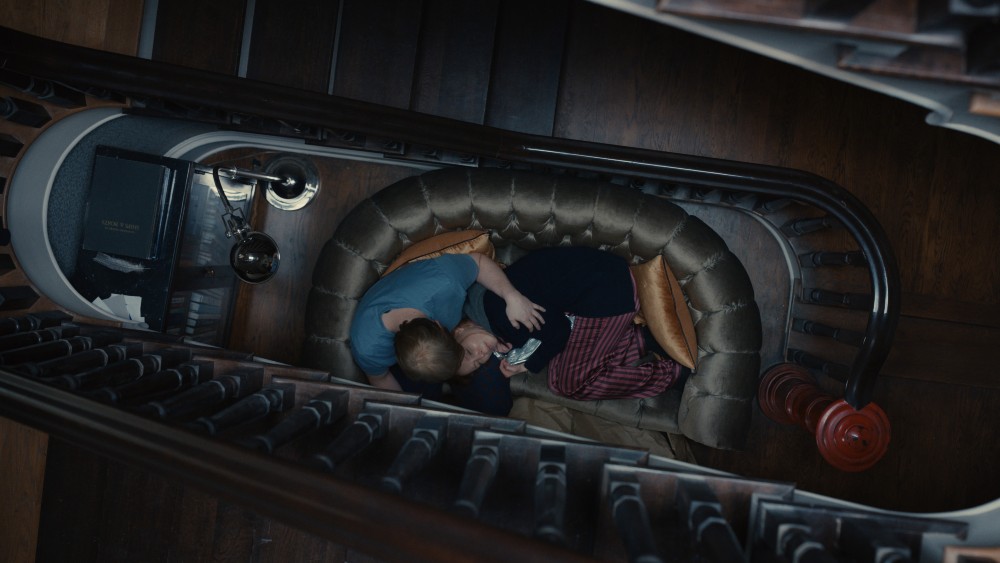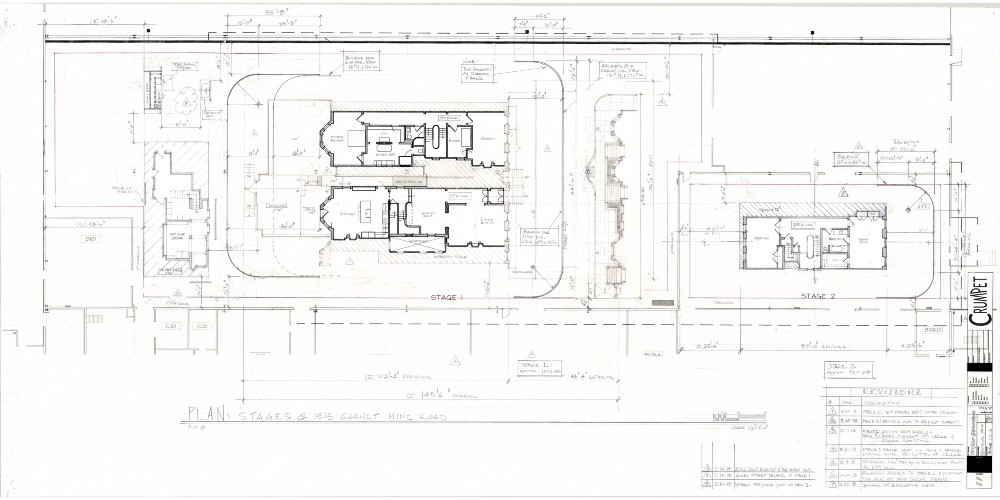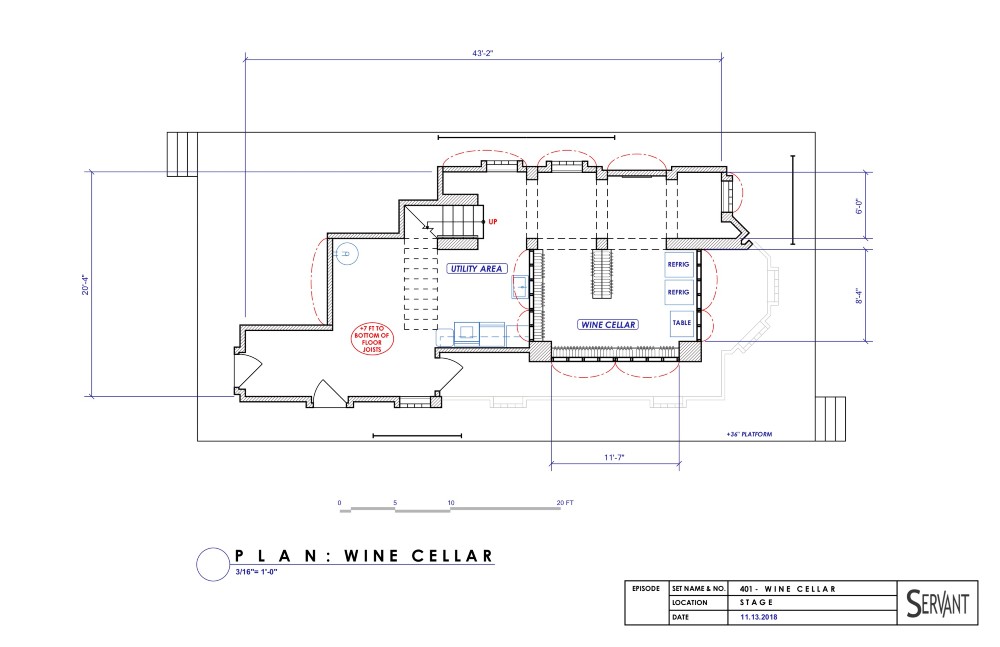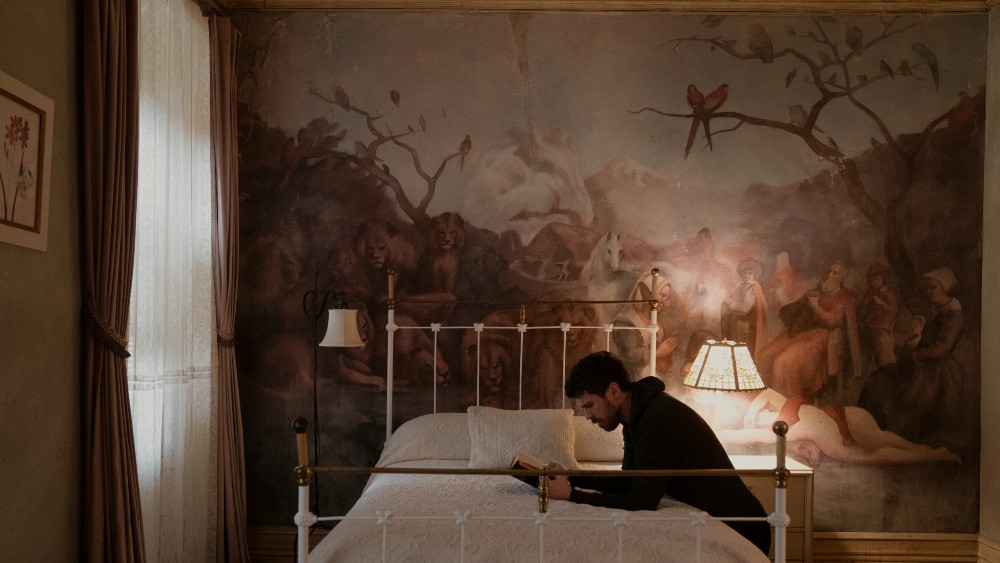
Production Designer Naaman Marshall, ADG, has worked up through the ranks of the art department beginning 20 years ago working in the art department for Mission: Impossible II. Since then, he’s worked on a number of high-profile movies as either Art Director (The Dark Knight, After Earth) or Production Designer (Don’t Breathe, The Visitor).
In fact, Marshall only transitioned to television in recent years as Art Director on HBO’s Westworld, which earned him an Emmy nomination in 2017, shared with Production Designer Nathan Crowley, and also allowing Marshall to win his second ADG Award. (Crowley and Marshall previously received an ADG Award for their work on Christopher Nolan’s The Dark Knight.)
Marshall reunites with filmmaker M. Night Shyamalan for his Apple TV+ series, Servant, now in its second season with a third season to come. Marshall’s design work on the show is impossible to ignore, since most of the series takes place in the Philly brownstone belonging to Dorothy and Sean Turner (Lauren Ambrose, Toby Kebbell), who have hired a live-in nanny named Leanne (Nell Tiger Free) to watch over their newborn son, Jericho. As we soon learn, Dorothy’s actual baby died, and Jericho has been replaced by a lifelike doll in an act of therapy. Once Leanne arrives, that doll comes to life, as Sean and his brother-in-law Julian (Rupert Grint) investigate into Leanne’s enigmatic background.
Servant Season 2 has continued to mostly take place in that brownstone, but we go up into the attic where Leanne is kept after she disappears but the Turners get her back, and into the basement where all sorts of other secrets are stored. If nothing else, that house alone and how it was constructed is an amazing accomplishment by Marshall and his art team.
Below the Line spoke with Marshall about these things and more for the interview below.

Below the Line: The first time I saw any footage from the show was at NY Comic-Con in October 2019, and I had just seen Parasite, and it was immediately obvious that the Turners’ townhouse was going to be a character in this show just like the house is in that movie.
Naaman Marshall: It is an absolute character.
BTL: It may be a cliché to say that, but it’s absolutely true.. You had been working with Night for a while, so when you got the scripts, was it obvious that building and/or finding that house was going to be crucial to the show and figuring out how to build it on soundstages?
Marshall: Exactly. I think I got the first three scripts, and it became very clear that we weren’t leaving the house. I said to Night, “We’re going to be pretty grounded in this, and the intention should be to build this on a soundstage.” Right away, I just started researching houses in Philadelphia, brownstones, and going in and scouting and feeling the spaces. I knew we needed a house exterior for the coming and going. At the end of the day, I chose two houses — one for the back and one for the front. The real houses are two streets apart, but they each have their strong suits as far as what’s out the back and what’s out the front. And then on stage, between those two walls of the houses, I just created the Turner’s house that you see on film. All of the in-betweens are made up, and then on the outside, I actually built the exterior of the house and the one next to it and across the street on stage. We have streets and sidewalks, and it fully rains on the stage in the front yard, in the backyard. We have windows across the street, we have furniture and lamps and all that kind of stuff in order to give us the ability to shoot as much as we can on stage, but knowing that when we go out on location, it gives us that sense of realness and scope that we know the show needs. Anytime we get out of the house, we like to feel at least you’re free for a moment from that claustrophobic-ness of the house.

BTL: What kind of research did you do as far as what to put in the interiors of the house? Obviously, there’s very specific things since Sean is a chef, and they’re going to be opulent and on the wealthier side of the Philly community.
Marshall: Exactly. Philly brownstones are different from Brooklyn brownstones and New York brownstones. With my location manager, I scouted many brownstones, say probably 30 plus, and went in, with the intention of possibly shooting the exterior and out their front windows. I was able to pick and pull from a whole bunch of different … what I realized was not one of them are alike. They may have exterior that feels the same, but the layouts and everything are so different. Everything is so track-home that anybody that was building a brownstone in the 1800s had money and his own designer, so everything is so different. I was able to kind of pick the pluses and minuses of each one and merge them into ours in order to give the cat and mouse game around different entrances and doors and be able to give the DP the ability to frame up on different rooms within rooms. For me, it was a lot of fun, because I could then choose what I liked in every brownstone and then come up with a way to merge them all together.
BTL: I spoke to Fede Alvarez for Don’t Breathe a few years ago, and I was really interested in how that house was designed and built to make it functional, and the Turners’ house is similar since you’re going from room to room in some scenes and they’re probably built on different stages. Does Night have his own soundstages on a boatyard?
Marshall: We took over a DuPont facility out in Chester County and retrofitted it to be a studio, so we don’t have a proper studio, but we stripped it all down, and it’s given us the ability to just build on top of itself — we’re wall to wall within this place.

BTL: That’s where Night does all his stage work?
Marshall: Not necessarily. We’ve done stuff at the Navy Yard with him or done stuff at Sun Center, but this is strictly Servant here.
BTL: Gotcha, because you spend so much building all these rooms, so if you have to break it down in between seasons, it’s just going to be a lot more work and money.
Marshall: And we don’t. That’s why with this particular house, I was able to just go full bore with it. The finishes are real, the hardwood is real. So between seasons, if I have to have a flooring company come in and redo the floors, I can. The plumbing is all real with hot water heaters going to every sink and the dishwasher works, the sinks work, the gas is full-on, and the toilets actually worked. So it gave us the ability to go from one set to the other. Night likes to shoot in continuity order, so I didn’t want to have to be bouncing around with five-gallon buckets under the floor of the set, I wanted to just be able to roll and pull the switch. I was having a lot of fun designing the set for that, just knowing that it was going to be able to last multiple seasons. Even though we didn’t know how far was going to go, they let me just commit to making a proper set that could withstand years of abuse by hundreds of people every day.
BTL: Especially when the show goes into the basement, which has been a huge part of the second season, and then they’re destroying part of it by digging up certain areas. Is there real cement down there and real construction that’s being destroyed when it needs to be for the story?
Marshall: That particular set is built on a deck. Early on, I didn’t want to be confined to the stage floor underneath that basement. I don’t know why I just thought I knew he’s gonna do something down here. I gave him a few feet of space underneath the floor in case we had something happen.

BTL: So this set is multi-tiered where the stairs actually go up and there’s more set up there or is it just stars that go up and there’s another stage somewhere else with the upstairs of the house?
Marshall: The first floor and the second floor are built right next to each other. The house that I chose has the same architecture as the neighbor, so the architect designed two. From the outside, when you look to the house on the right, it’s actually the second floor. So we film in there and we have a backing that we pull in front of those windows to be a second-floor backing. So that’s in one space, and then the backyard and the front yard, we have a full street and the house facade across the street. That’s all proper, we can drive cars and do all of that. The backyard is a build out the doors of the kitchen and then Lianne’s floor is on another stage, and the basement is in another space and the attics are in another area. What I did, because I was confined to a space that isn’t your standard stage where you have maybe 40-foot ceilings and you can go as high as you want. I’m working with between 18 and 20 feet. I made the staircases go as high as I could up and as far as I could down on every floor. So when you see the staircases, sometimes we’re shooting one for another, whichever one works best for the particular angle.
BTL: I imagine you’re working pretty closely with the set decorators because rooms like Lianne’s room in the attic, there’s a lot of things, so how much of that is collaboration so that what we see in the background on those sets coexists?
Marshall: It’s huge, the set decoration… Karen Frick is my decorator, who I’ve worked with on many shows, and our relationship is now so streamlined that she knows exactly where to head with something with just very little communication at this point. What I tend to do is put up walls within my art department that break down every room, and then I bring in all the different departments, including set dec, props costume, the DP, and I put images from each department to make sure that we’re all playing together. So, Karen, she’s really good at telling a story of who these people are, and she’s very meticulous about the backstory of Sean and the books that he would have. There’s not a book in the house that he wouldn’t want to read. We always like to think that if an actor actually opens a drawer, what’s in the drawer is what he was looking for. So we have junk drawers in the house, we have knife drawers in the house. One drawer has batteries. For Sean, that kitchen became such a personal thing to him that Karen and Toby [Kebbell]… Toby would come in from the weekend and have pasta equipment that he had bought at some store and ask if he could put it in, because that’s what he thinks he’d have. And it’d be like, “Yeah, of course.” And then he’d say, “But I kind of need this.” The kitchen for Sean is, you don’t even have to tell him where to go in there anymore. He knows what every drawer is, he knows where the spices are. In the mornings, we’d sometimes cook, when we were introducing the set the first couple mornings, our assistant decorator would go in, and he’d start cooking bacon in the kitchen. So that when the crew would get there, it just kind of felt like it’s breakfast time. So we had a lot of fun, because the house was practical, that we could actually use it in that way.
BTL: I like when a show like this crosses that fine line between what is set decoration and what are props, because everything on that set can end up being a prop depending on what is going on in the story.
Marshall: Absolutely, yeah, it’s always a hard one, and it’s always that relationship of who’s stepping on whose toes, and a lot of times the prop master starts much, much later than set decoration. A lot of that stuff gets handed over and dealt with, but the relationship between those two just became so tight. We have a chef with the show as well, he’s the guru of the kitchen, so not only do we have to go to Drew first in order to be authentic, and we’ll say, “What would he be doing here? Or what pan would he be using? How would this be done?” and Drew sets up the shot for us, and then we go in and facilitate it. But everything in that house … the refrigerators all work, and you can go in there and grab a slice of cheese if you want, which is kind of fun.
BTL: I assume it’s easier on a second season, because everything is set up and ready to go, and you don’t have to rebuild as much. At this point, are you just looking for new locations for upcoming episodes?
Marshall: Yes, it’s always kind of looking ahead at where we’re headed, but you know, these get worked, and people tend to go on cruise control. I just want to make sure that the quality of everything stays up, so we refinish between seasons, or we freshen up the floors. Sean might come to us and say, “Hey, I think some people must have robbed this place while we were gone, because the kitchen just doesn’t have what it used to have. I used to have really fancy knives in here and a knife sharpener, and they’re not here anymore. Can we get some of that?” So there’s a lot of maintenance going on. That’s what’s fun to me is just to make sure that we’re all staying as vigilant with the show as meant to be. Ultimately, I don’t want people to know I built a set, although I’m so proud of it. The idea is for everybody to assume I built nothing, and I shouldn’t get any credit for the design of it is how I like to look at it.
BTL: My last question is about how you work with different directors who come onto the show, and I especially want to ask about working with Night’s daughter, Ishana, who I met maybe 12 years ago when Night was showing his family, Lady in the Water.
Marshall: Ishana is a pleasure to work with. She is young, and she’s very humble in her experience of being a director, so she comes to the party absolutely prepared with her own ideas and her own take on how she wants to do it. She’ll say, “I’ve never done this before, so I’m leaning on you guys to show me.” And that was last year. And now, to be working with her again, just to see her growth and expertise. I think it helps having her go home every night and get a masterclass in film from her dad. But Ishana is definitely her own person with her own ideas and her own writing ability. It’s really refreshing to see such a young person with the drive and really the political savvy to kind of be in the room with all the big guys.
Seasons 1 and 2 of Servant are available to watch streaming on Apple TV+. All pictures courtesy of Apple, except for floorplans courtesy Apple and Naaman Marshall.






